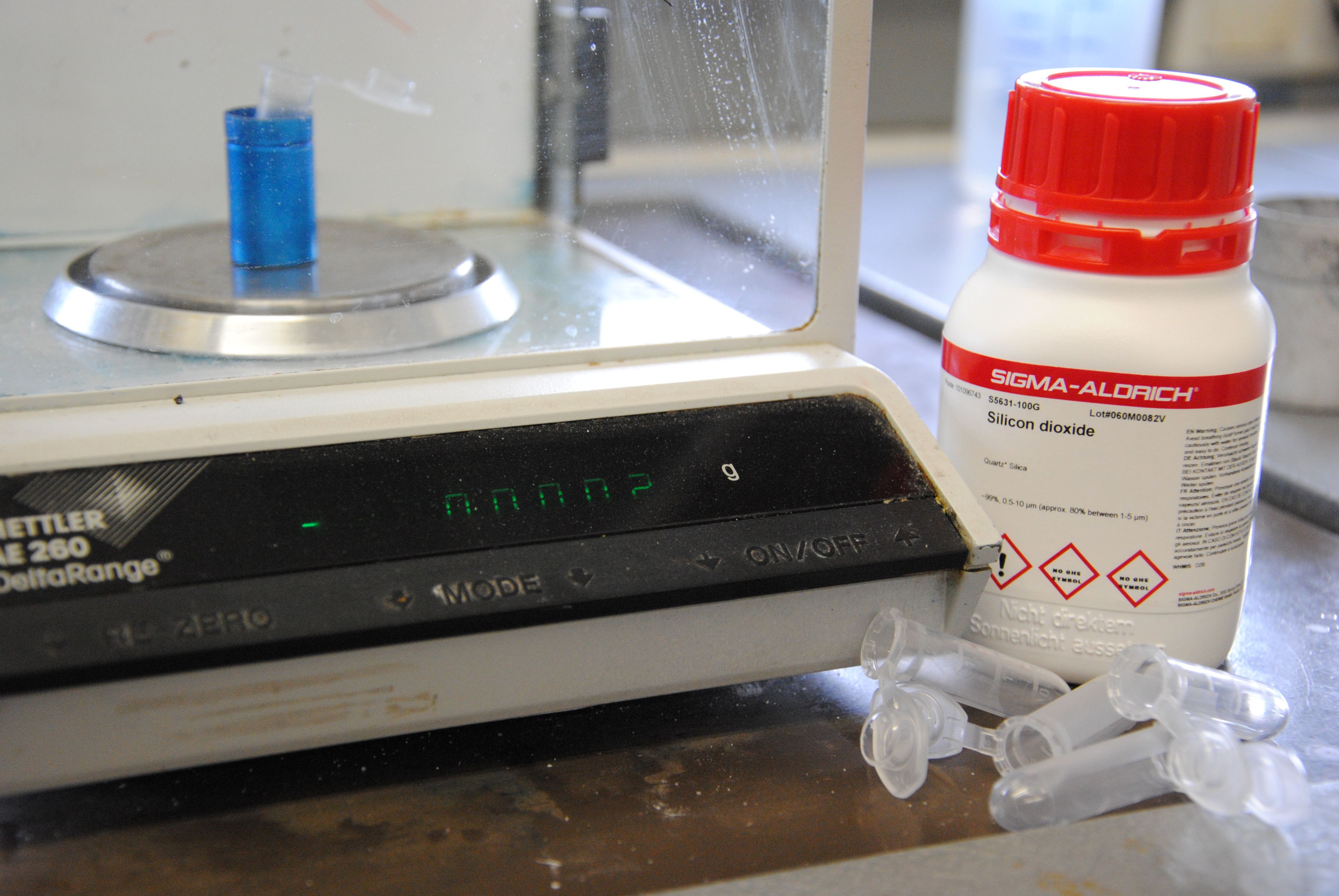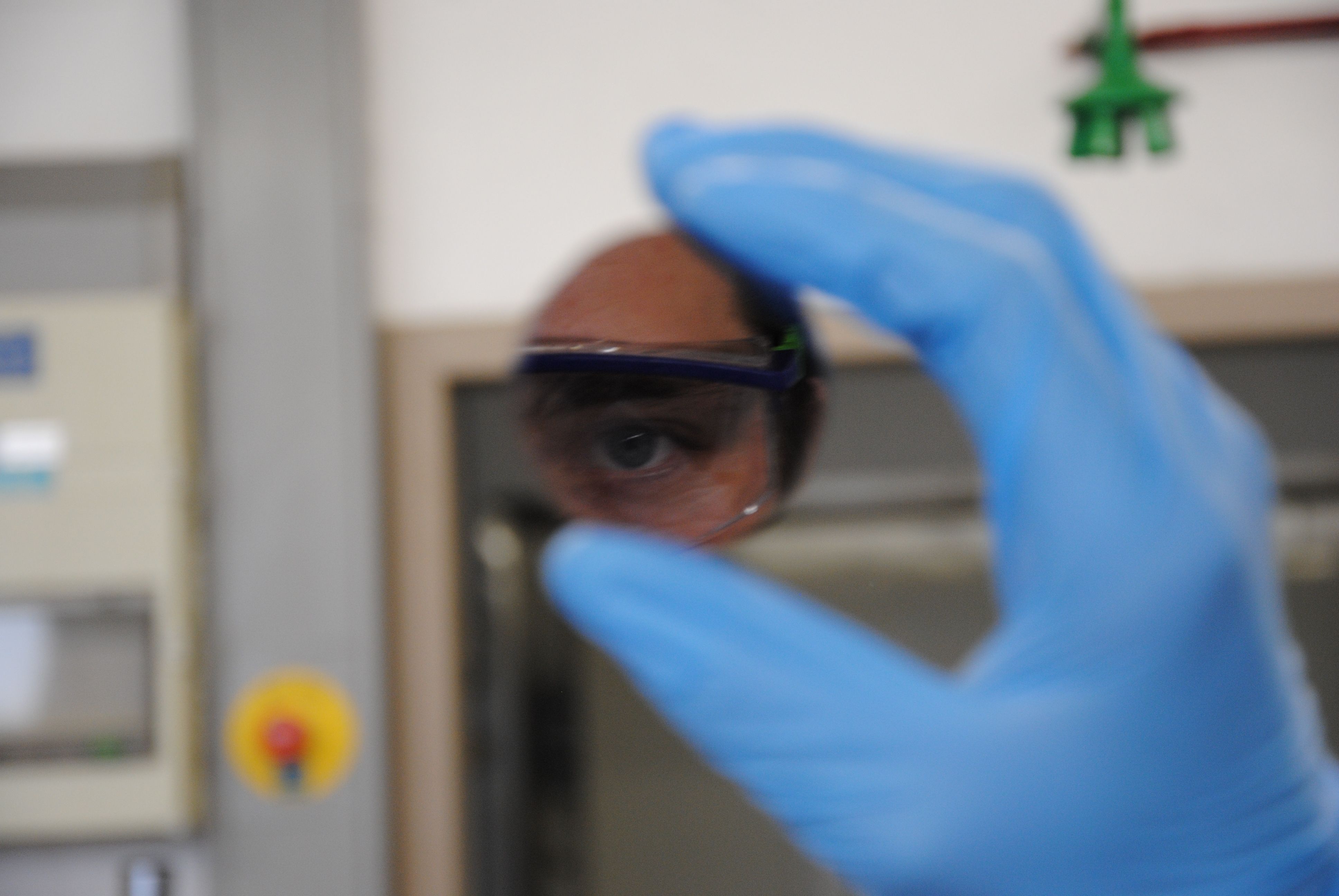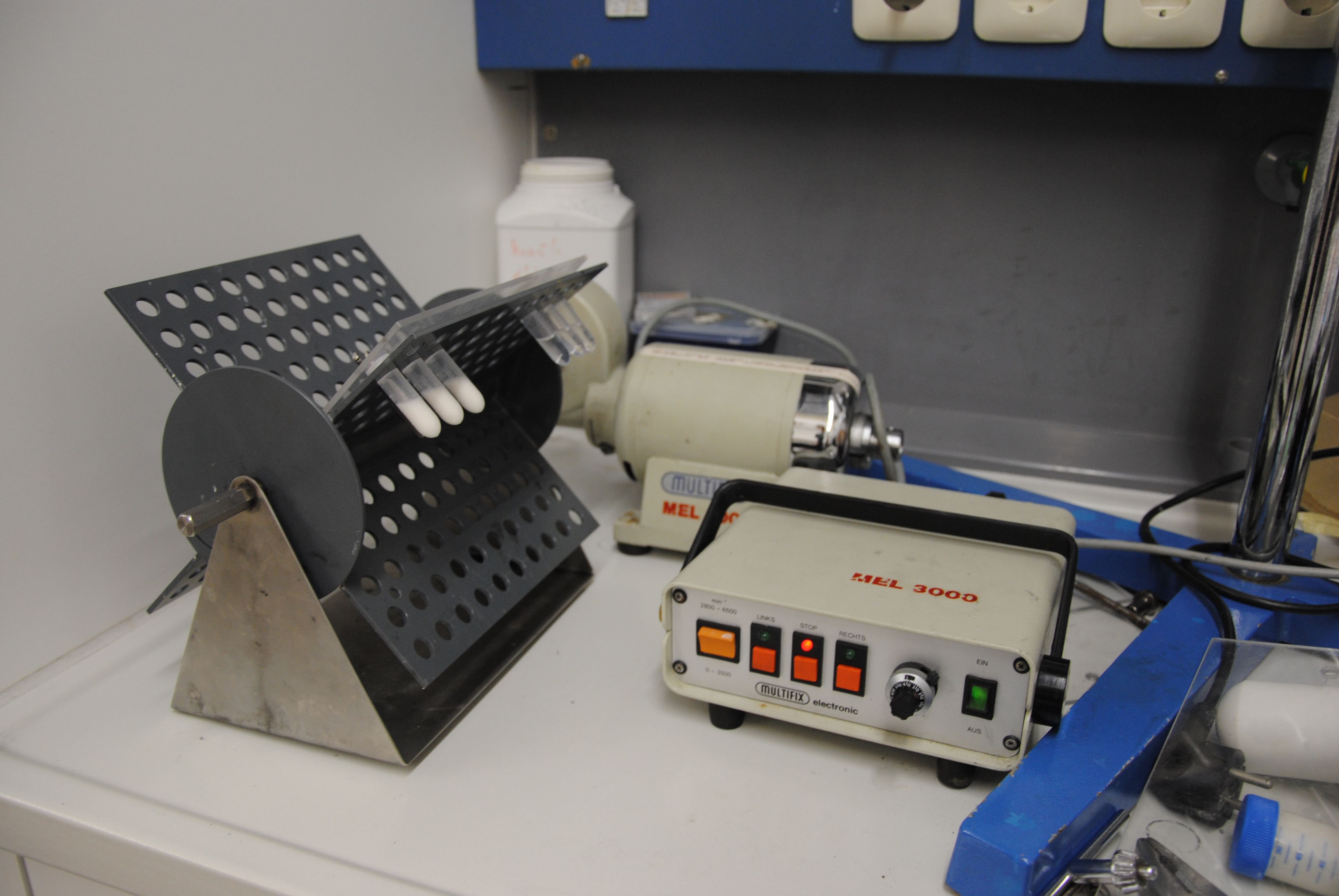Team:Bielefeld-Germany/Results/S-Layer/Guide/7
From 2011.igem.org
(Created page with "{{Bielefeld_2011_Header}} =Immobilization and recrystallisation of S-layer proteins= You have your S-layer protein monomer solution? Then you are at most five hours away from y...") |
|||
| Line 9: | Line 9: | ||
[[Image:IGEM-Bielefeld2011-Silicabeads.JPG|400px|thumb|left|Silicon dioxide beads.]] | [[Image:IGEM-Bielefeld2011-Silicabeads.JPG|400px|thumb|left|Silicon dioxide beads.]] | ||
[[Image:IGEM-Bielefeld2011-Waver.JPG|400px|thumb|left|A silicon waver.]] | [[Image:IGEM-Bielefeld2011-Waver.JPG|400px|thumb|left|A silicon waver.]] | ||
| + | |||
| + | <br style="clear: both" /> | ||
S-layers can reassemble on a lot of different surfaces like gold, nylon, functionalized glass or silicon dioxide. We used silicon dioxide because it is cheap and easy to handle. For microscopy we used silicon wavers with a silicon dioxide surface. Then... | S-layers can reassemble on a lot of different surfaces like gold, nylon, functionalized glass or silicon dioxide. We used silicon dioxide because it is cheap and easy to handle. For microscopy we used silicon wavers with a silicon dioxide surface. Then... | ||
| Line 16: | Line 18: | ||
[[Image:IGEM-Bielefeld2011-Rotator.JPG|400px|thumb|left|A vertical rotator which we used for coating silica beads with S-layers.]] | [[Image:IGEM-Bielefeld2011-Rotator.JPG|400px|thumb|left|A vertical rotator which we used for coating silica beads with S-layers.]] | ||
[[Image:IGEM-Bielefeld2011-HBSS.JPG|200px|thumb|left|HBSS and recrystallization buffer for recrystallization.]] | [[Image:IGEM-Bielefeld2011-HBSS.JPG|200px|thumb|left|HBSS and recrystallization buffer for recrystallization.]] | ||
| + | |||
| + | <br style="clear: both" /> | ||
| + | |||
| + | '''Using silica beads''' | ||
| + | |||
| + | Weigh in 100 mg silica beads in a 2 mL reaction tube, add 900 µL HBSS buffer (pH 7.4, for SgsE) or recrystallization solution (pH 9.0, for SbpA) and 100 µL of your monomeric solution. You need these buffers because the S-layers we provided only self-assemble in the presence of ions e.g. calcium. Incubate the mix 4 h at room temperature on a vertical rotator. Bring down the beads afterwards by centrifugation, wash them with ddH<sub>2</sub>O and store them in ddH<sub>2</sub>O at 4 °C - finished. Now you have silica beads which are coated with your own functionalized nanobiotechnological surface. This is what we call do it yourself nanobiotechnology. | ||
| + | |||
| + | |||
| + | '''Silicon wavers''' | ||
| + | |||
| + | Silicon wavers are not that cheap and not that applicatory as silica beads but a good way to do atomic force microscopy of your S-layers. Using silicon wavers with a silicon dioxide surface: Cut or break the waver into small pieces, place it in a 1.5 mL reaction tube, add 900 µL HBSS buffer (pH 7.4, for SgsE) or recrystallization solution (pH 9.0, for SbpA) and 100 µL of your monomeric solution and wait for 4 h (room temperature). Rinse the waver with ddH<sub>2</sub>O and store it in ddH<sub>2</sub>O at 4 °C until use. | ||
Revision as of 08:00, 28 October 2011

Immobilization and recrystallisation of S-layer proteins
You have your S-layer protein monomer solution? Then you are at most five hours away from your nanobiotechnological device - and this only because you have to wait 4 hours for the recrystallization and immobilization of your S-layer proteins. But before you begin...
Choose your surface
S-layers can reassemble on a lot of different surfaces like gold, nylon, functionalized glass or silicon dioxide. We used silicon dioxide because it is cheap and easy to handle. For microscopy we used silicon wavers with a silicon dioxide surface. Then...
Let the immobilization begin
Using silica beads
Weigh in 100 mg silica beads in a 2 mL reaction tube, add 900 µL HBSS buffer (pH 7.4, for SgsE) or recrystallization solution (pH 9.0, for SbpA) and 100 µL of your monomeric solution. You need these buffers because the S-layers we provided only self-assemble in the presence of ions e.g. calcium. Incubate the mix 4 h at room temperature on a vertical rotator. Bring down the beads afterwards by centrifugation, wash them with ddH2O and store them in ddH2O at 4 °C - finished. Now you have silica beads which are coated with your own functionalized nanobiotechnological surface. This is what we call do it yourself nanobiotechnology.
Silicon wavers
Silicon wavers are not that cheap and not that applicatory as silica beads but a good way to do atomic force microscopy of your S-layers. Using silicon wavers with a silicon dioxide surface: Cut or break the waver into small pieces, place it in a 1.5 mL reaction tube, add 900 µL HBSS buffer (pH 7.4, for SgsE) or recrystallization solution (pH 9.0, for SbpA) and 100 µL of your monomeric solution and wait for 4 h (room temperature). Rinse the waver with ddH2O and store it in ddH2O at 4 °C until use.
 "
"




